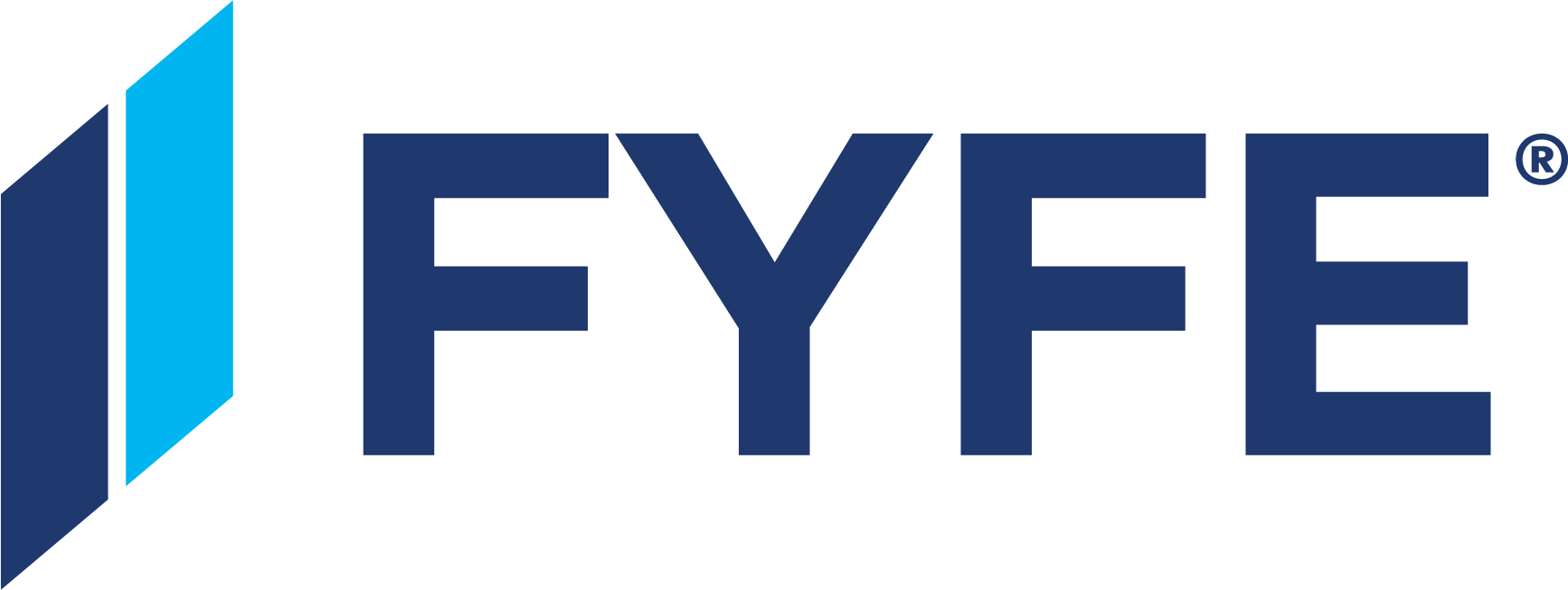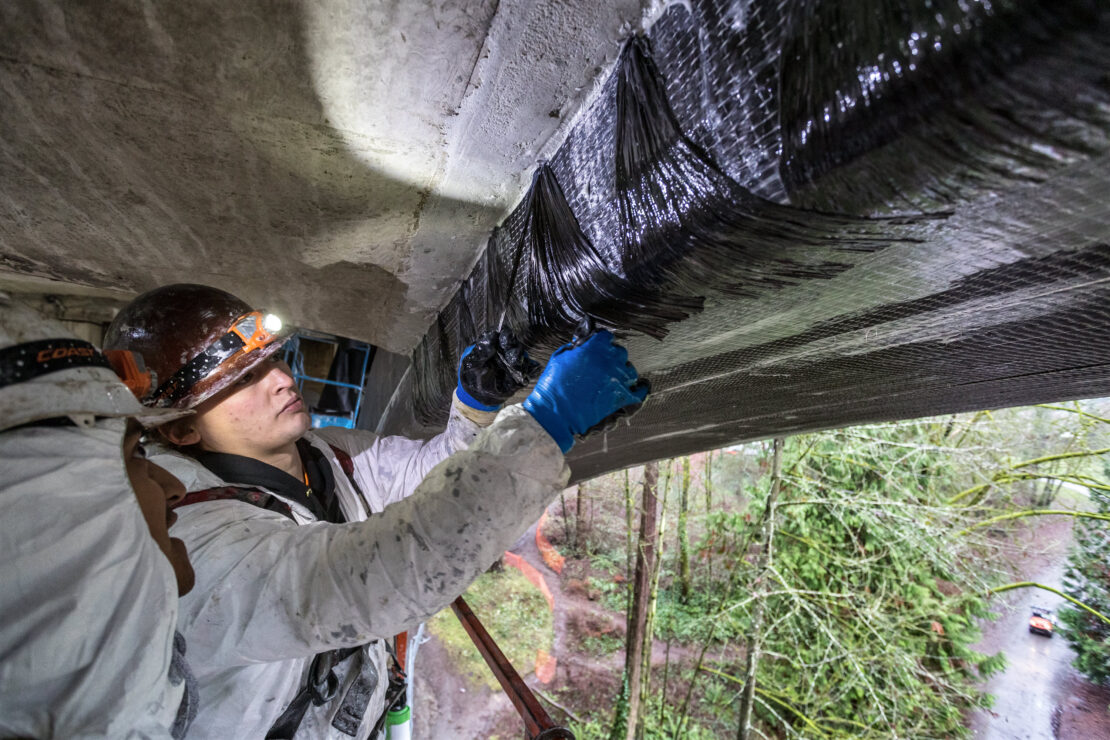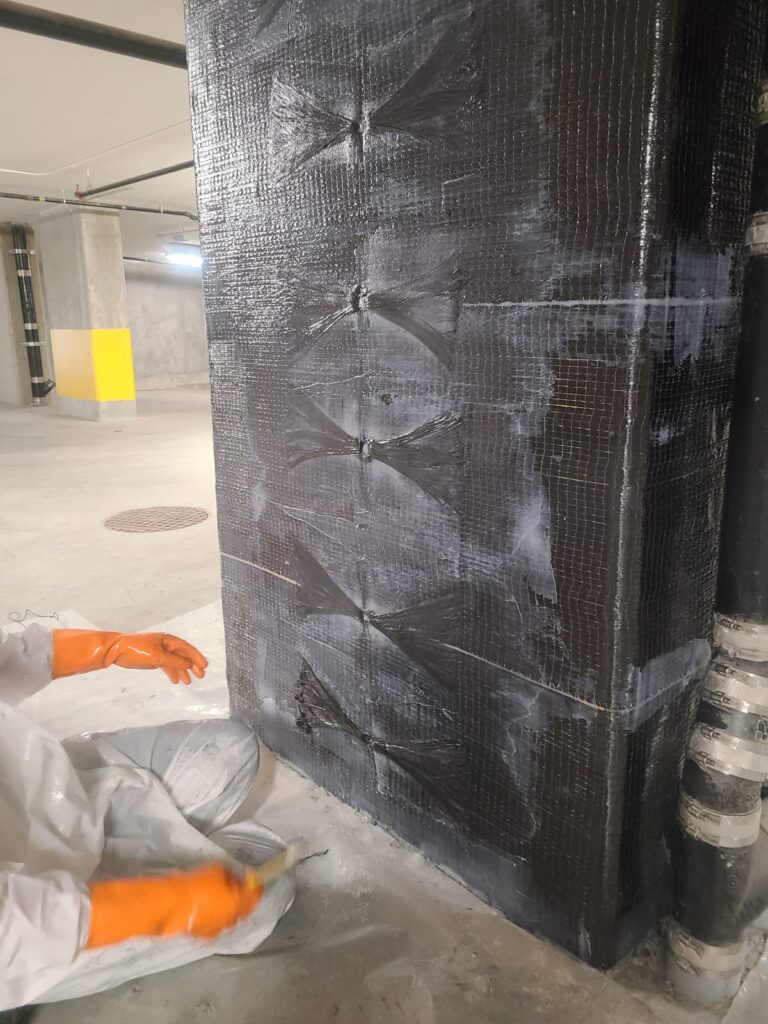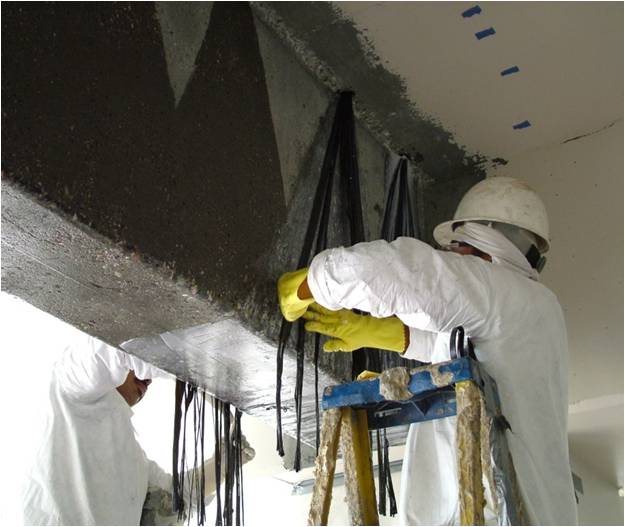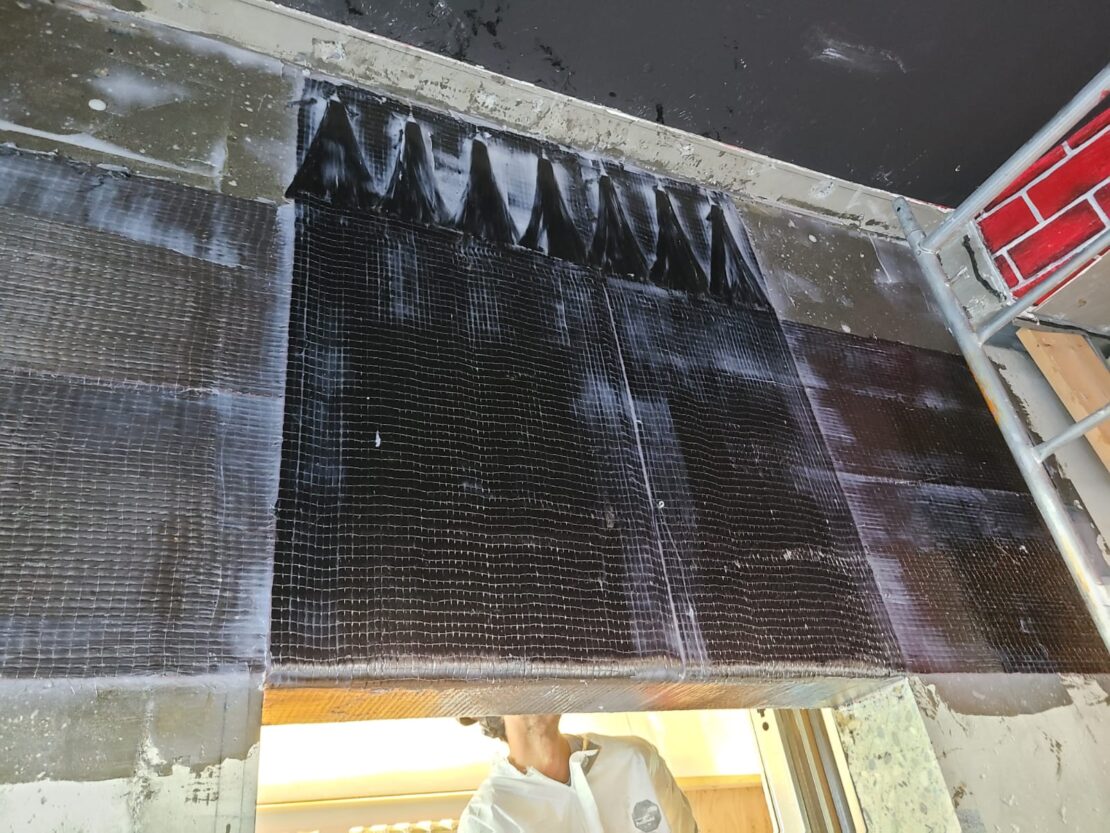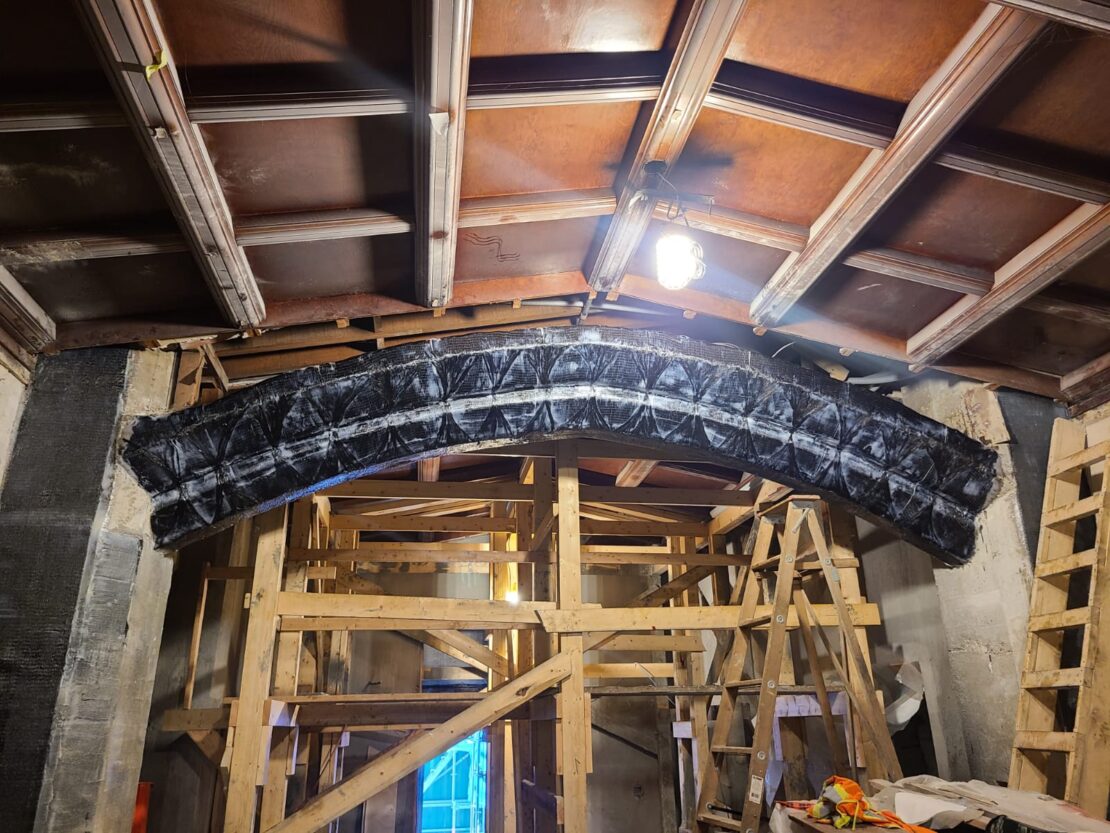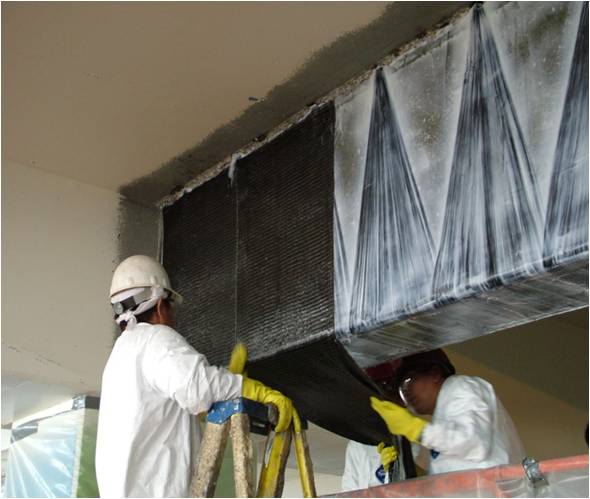Improve the performance of the bonded FRP design
Fiber anchors are high-strength fibers (typically carbon) combined with our Tyfo S Epoxy which forms an advanced composite, compatible with all Tyfo FRP systems.
The use of composite anchor systems to improve the performance of bonded FRP laminates was first proposed and tested in the 1990s. Unlike conventional adhesive anchors, it is not easy to proof test composite anchors in the field as they are not rigid until fully cured. By combining existing test procedures and innovative thinking, a method was developed to validate our large-diameter anchor systems according to ACI 355.4 Qualification of Post-Installed Adhesive Anchors in Concrete. Additional design properties have been obtained using ASTM D7205 Standard Test Method for Tensile Properties of Fiber Reinforced Polymer Matrix Composite Bars.
We have tested and validated the minimum bond shear strength of our anchors in both cracked and uncracked concrete and have published the minimum tensile and shear strength values for our anchors in our approved evaluation report (IAPMO UES ER-595).
With composite anchors becoming more common in FRP applications, we encourage industry professionals to put careful consideration into their specification requirements. Fyfe FRP provides no cost, no obligation technical support to design and specify these applications with confidence.
Fiber Anchor Functionality
Embedded Fiber Anchors transfer the strength from the FRP laminate into the substrate.
- Develop the strength of the FRP laminate at its termination point and at critical locations
- May be used to provide shear transfer enhancement
Splice Fiber Anchors are used to transfer the strength from one FRP laminate, through an obstacle to another FRP laminate.
- Splice anchors can be installed through wall, slab or beam obstructions.
- Splice anchors can be passed through penetrations to confine the concrete and restrict bars from buckling where there is no access to wrap all-the-way around with the FRP laminate (e.g., wall boundary elements, beam hinge locations).


